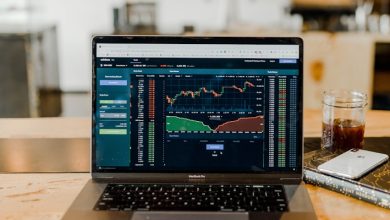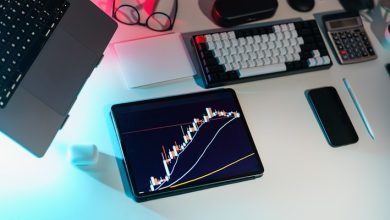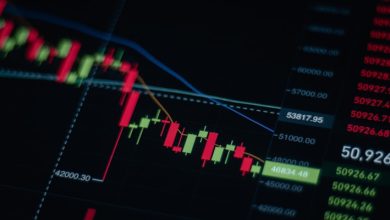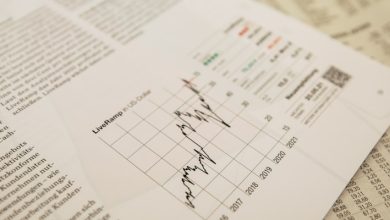How to Use Technical Analysis to Time Your Crypto Trades

- Understanding the basics of technical analysis
- Identifying key indicators for crypto trading
- Using chart patterns to predict market movements
- Implementing support and resistance levels in your analysis
- Utilizing moving averages for trend identification
- Strategies for combining technical analysis with fundamental analysis in crypto trading
Understanding the basics of technical analysis
Technical analysis is a method used to evaluate investments and identify trading opportunities by analyzing statistical trends gathered from trading activities, such as price movement and volume. It is based on the belief that historical price movements can provide insights into future price movements.
Understanding the basics of technical analysis involves familiarizing yourself with key concepts and tools used in this approach. Some of the fundamental concepts include:
- Trend analysis: This involves identifying the direction in which an asset’s price is moving. Trends can be classified as upward, downward, or sideways, and can help traders determine the best time to enter or exit a trade.
- Support and resistance levels: These are price levels at which an asset’s price tends to stop and reverse direction. Traders use these levels to set entry and exit points for their trades.
- Indicators: These are tools used to analyze price movements and identify potential trading opportunities. Common indicators include moving averages, relative strength index (RSI), and moving average convergence divergence (MACD).
- Chart patterns: These are formations that appear on price charts and can signal potential changes in price direction. Examples of chart patterns include triangles, head and shoulders, and flags.
By mastering these basic concepts, traders can improve their ability to analyze market trends and make informed trading decisions. Technical analysis can be a valuable tool for timing crypto trades and maximizing profits in the volatile cryptocurrency market.
Identifying key indicators for crypto trading
When it comes to crypto trading, identifying key indicators is crucial for making informed decisions. These indicators are signals or patterns in the market that can help traders predict future price movements. By analyzing these indicators through technical analysis, traders can better time their trades to maximize profits.
Some of the key indicators to look out for in crypto trading include moving averages, relative strength index (RSI), and Bollinger Bands. Moving averages help traders identify trends by smoothing out price fluctuations over a specific period. RSI is a momentum oscillator that measures the speed and change of price movements, indicating overbought or oversold conditions. Bollinger Bands consist of a middle band and two outer bands that represent price volatility.
By paying attention to these key indicators and understanding how they interact with each other, traders can gain valuable insights into the market and make more informed trading decisions. It’s important to not rely on just one indicator but to use a combination of indicators to confirm signals and reduce the risk of false alarms.
Using chart patterns to predict market movements
One of the most popular ways to analyze market movements in technical analysis is by using chart patterns. These patterns can help traders predict potential price movements based on historical data.
There are various types of chart patterns that traders can use to make informed decisions. Some of the most common patterns include:
- Head and Shoulders
- Double Tops and Bottoms
- Triangles
- Flags and Pennants
By identifying these patterns on a price chart, traders can anticipate whether the price is likely to continue in its current direction or reverse. This information can be valuable in determining entry and exit points for trades.
It is important to note that chart patterns are not foolproof and should be used in conjunction with other forms of analysis. However, they can provide valuable insights into market sentiment and potential price movements.
Overall, incorporating chart patterns into your technical analysis toolkit can help you time your crypto trades more effectively and make more informed decisions in the volatile cryptocurrency market.
Implementing support and resistance levels in your analysis
Support and resistance levels are crucial tools in technical analysis for timing your crypto trades effectively. These levels represent points on a chart where the price has a tendency to stop and reverse its direction. By implementing support and resistance levels in your analysis, you can make more informed decisions about when to enter or exit a trade.
One way to identify support and resistance levels is to look for areas where the price has repeatedly reversed in the past. These levels can act as barriers that the price must break through before continuing its trend. Support levels are areas where buying interest is strong enough to overcome selling pressure, while resistance levels are areas where selling pressure is strong enough to overcome buying interest.
When analyzing support and resistance levels, it’s essential to consider both historical price data and current market conditions. Support and resistance levels that have been tested multiple times are typically considered stronger and more reliable. However, it’s also crucial to pay attention to how the market is currently behaving and whether there are any new developments that could impact the strength of these levels.
Incorporating support and resistance levels into your analysis can help you set realistic price targets and stop-loss orders for your trades. By identifying key levels where the price is likely to reverse, you can better manage your risk and improve your overall trading strategy. Additionally, understanding the significance of these levels can provide valuable insights into market sentiment and potential price movements.
Overall, utilizing support and resistance levels in your technical analysis can enhance your ability to time your crypto trades effectively. By identifying key levels where price reversals are likely to occur, you can make more informed decisions about when to enter or exit the market. Whether you’re a beginner or an experienced trader, incorporating these levels into your analysis can help you navigate the volatile world of cryptocurrency trading with greater confidence and success.
Utilizing moving averages for trend identification
One popular tool in technical analysis for identifying trends in the cryptocurrency market is utilizing moving averages. Moving averages help traders smooth out price data to identify the direction of a trend over a specific period of time. By analyzing the relationship between different moving averages, traders can gain insights into potential buy or sell signals.
There are two main types of moving averages that traders commonly use: simple moving averages (SMA) and exponential moving averages (EMA). SMAs give equal weight to each price point in the period being analyzed, while EMAs give more weight to recent price data. Traders often use a combination of these moving averages to confirm trends and filter out noise in the market.
When using moving averages for trend identification, traders typically look for crossovers between different moving averages as potential entry or exit points for trades. For example, a bullish signal is generated when a shorter-term moving average crosses above a longer-term moving average, indicating a potential uptrend. Conversely, a bearish signal is generated when a shorter-term moving average crosses below a longer-term moving average, signaling a potential downtrend.
Strategies for combining technical analysis with fundamental analysis in crypto trading
When it comes to trading cryptocurrencies, combining technical analysis with fundamental analysis can be a powerful strategy. By using technical analysis to analyze price charts and identify trends, and fundamental analysis to assess the underlying value of a cryptocurrency, traders can make more informed decisions.
One way to combine technical and fundamental analysis is to use technical indicators to confirm or contradict signals from fundamental analysis. For example, if a fundamental analysis suggests that a cryptocurrency is undervalued, a trader can use technical indicators to look for entry points that confirm this assessment.
Another strategy is to use technical analysis to time entries and exits based on fundamental analysis. For instance, if a fundamental analysis indicates that a particular cryptocurrency is likely to increase in value over the long term, a trader can use technical analysis to identify optimal entry points to maximize profits.
It’s important to remember that both technical and fundamental analysis have their strengths and weaknesses, so it’s essential to use them in conjunction with each other to make well-rounded trading decisions. By combining these two approaches, traders can gain a more comprehensive understanding of the market and increase their chances of success.



